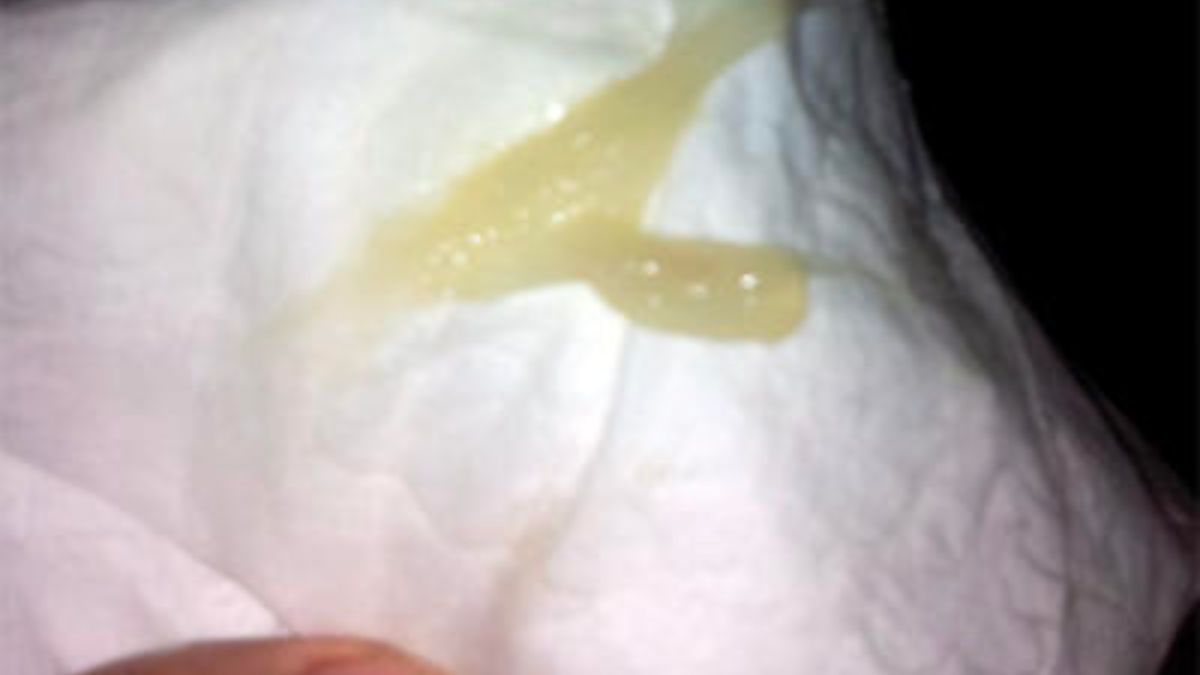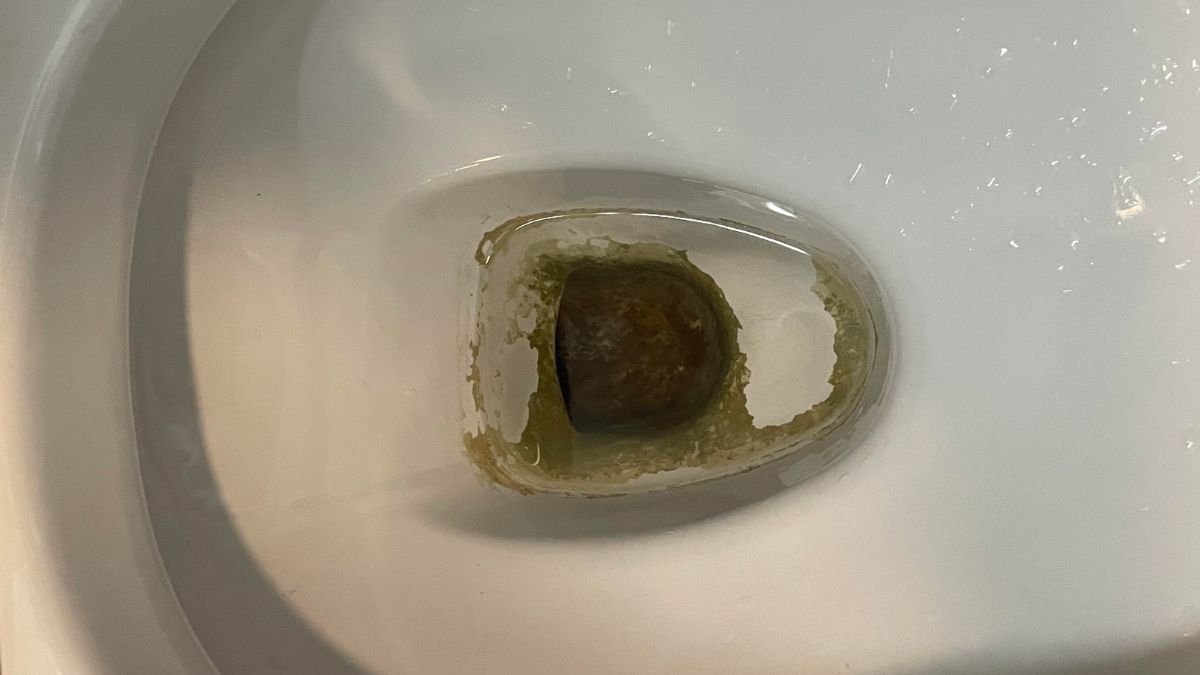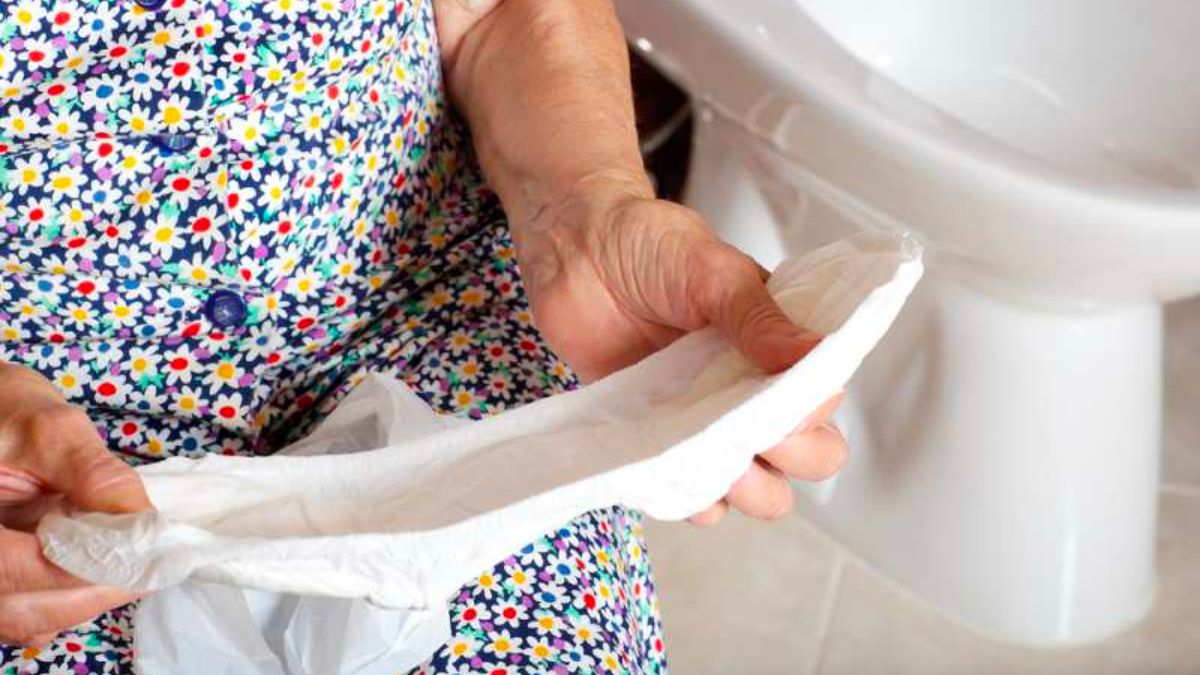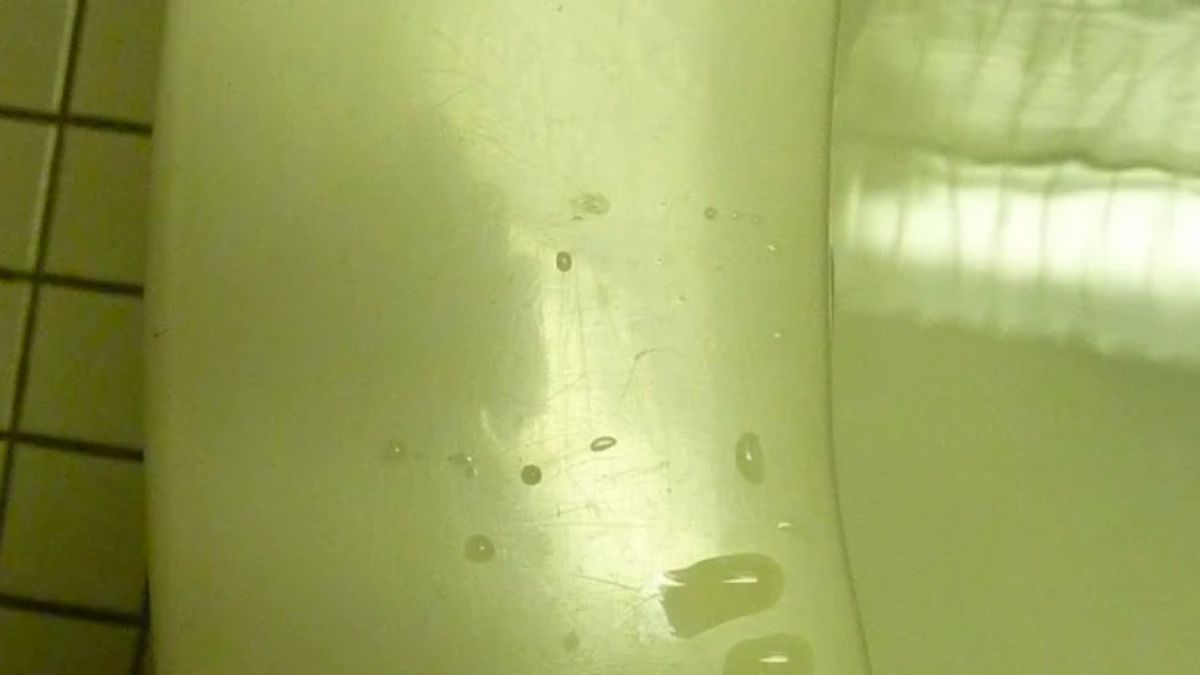Discover the significance of finding a mucus plug in toilet after peeing. Learn what it looks like and what it might mean for your health. Get informed and stay healthy with mucusplug.net!
What is mucus plug in toilet after peeing?

A mucus plug in the toilet after peeing can be a cause for concern and should be discussed with a medical professional. The mucus plug is typically associated with pregnancy and is a thick, gel-like substance that forms in the cervix during pregnancy. It serves to block the cervix and protect the uterus from infection. It is often expelled from the body when labor is about to begin or during the early stages of labor.
However, if you’re not pregnant and you notice a mucus-like substance in the toilet after urination, it could be a sign of an underlying medical issue. It may indicate an infection, irritation, or another health condition affecting your urinary or reproductive system. In such cases, it’s important to consult a healthcare provider for a proper evaluation and diagnosis.
FAQs (Frequently Asked Questions) about mucus plug in toilet after peeing
Explore our FAQs about the “Mucus Plug In Toilet After Peeing”. Get answers to common questions, learn what causes it, and find out when to seek medical advice. Your comprehensive guide to understanding this phenomenon.
Can mucus plug come out while peeing?

The mucus plug, often referred to as the “bloody show” is a significant indicator of the impending childbirth process. This plug, composed of thick mucus, seals the cervix during pregnancy to protect the developing fetus from potential infections. As you approach the end of your pregnancy, you may experience the discharge of the mucus plug, which can manifest in various ways.
One common occurrence is that you may notice the mucus plug coming out when you use the bathroom. This can happen as you wipe or when it dislodges as you strain during a bowel movement. It’s often described as a thick, jelly-like substance, sometimes tinged with streaks of blood. The presence of blood is due to small blood vessels breaking as the cervix begins to dilate, signaling that your body is preparing for labor.
Alternatively, you may discover the mucus plug in your underwear. This may happen when the plug dislodges while you are going about your daily activities. Finding it in your underwear can be surprising, as it can vary in color and consistency, often appearing mucus-like or gelatinous.
However, it’s important to note that the release of the mucus plug can also occur more subtly, over the course of several days. In this case, you may not notice a single, distinct expulsion, making it less noticeable. Instead, you might observe increased vaginal discharge that gradually becomes thicker and more mucus-like. This extended discharge is still indicative of the mucus plug dislodging, even if it doesn’t present itself as a single, dramatic event.
The loss of the mucus plug is a sign that your body is preparing for labor and is typically one of the early signs of impending childbirth. While it can vary in appearance and timing for different individuals, it’s a natural part of the process as your cervix begins to change in preparation for the arrival of your baby. If you have any concerns or questions about the mucus plug, it’s always a good idea to reach out to your healthcare provider for guidance and reassurance.
Can you see your mucus plug in the toilet?

As your body gets ready for the incredible process of labor and childbirth, a significant event occurs in the cervix. This critical event is the release of the mucus plug. The mucus plug, also known as the cervical mucus plug, is a protective barrier that has sealed the cervix throughout your pregnancy, keeping the uterus and developing fetus safe from potential infections. This plug is typically thick, jelly-like, and can vary in color from clear to white, but sometimes it may have a slight yellowish or pinkish tinge.
As the time for labor approaches, the cervix begins to soften and dilate. This process is essential for the baby to pass through the birth canal. When this happens, the mucus plug is expelled from the cervix. The way this occurs can vary from woman to woman. For some, it may come out all at once, which can be a noticeable event. Others may experience it in smaller portions over a period of time, which might not be as immediately obvious.
One of the common signs that the mucus plug has been released is a noticeable increase in vaginal discharge. You might find that your underwear is wetter than usual, and this discharge can be quite thick and substantial. Additionally, you might notice streaks of blood within the mucus or when you wipe after using the toilet. This blood is often referred to as “bloody show” and is a result of small blood vessels in the cervix rupturing as it begins to open. It can be pink, red, or even brownish in color.
The expulsion of the mucus plug is a significant indication that your body is gearing up for labor, and it’s one of the early signs that your baby will soon make their arrival. However, it’s important to remember that the timing of labor varies for each individual, and losing the mucus plug doesn’t necessarily mean labor will start immediately. It’s just one of the many steps your body goes through to prepare for the beautiful journey of childbirth.
What does a mucus plug look like when you pee?

A mucus plug, in the context of pregnancy, is a crucial biological phenomenon that serves as a protective barrier within the cervix. This plug is notably thick, having a dense, almost viscous consistency that resembles a mixture of paste and jelly. Its opaqueness adds to its distinctive appearance, and it can vary in color. Although it is typically white, there are instances where it may be tinged with a slight hint of blood.
This remarkable natural barrier is one of the unsung heroes of pregnancy, working diligently to safeguard the developing fetus from potential external threats. The mucus plug’s primary function is to seal off the cervix, forming an effective blockade against various pathogens and preventing them from ascending into the uterus. It acts as a sort of guardian, standing resolute in its role until the very end of the pregnancy journey.
It’s important to note that while this mucus plug plays a pivotal role in safeguarding the baby, you might not encounter it until the final stages of pregnancy. This late reveal is often because the mucus plug typically remains hidden within the cervix, diligently fulfilling its protective mission, and only makes its presence known when the body begins to prepare for labor and childbirth. So, while it’s a fascinating aspect of the pregnancy process, the mucus plug is usually inconspicuous until its role in the grand finale of the gestational journey.
How big is the mucus plug when it comes out?

The mucus plug, a critical part of a pregnant woman’s body, is a gelatinous substance that seals the cervix during pregnancy. When it is eventually discharged, it typically measures around 1 to 2 inches in length. This mucus plug isn’t merely a tiny amount; it also amounts to approximately 1 to 2 tablespoons in volume. The mucus itself has a relatively neutral odor, meaning it doesn’t have a strong or offensive smell.
This unique bodily secretion plays a crucial role in protecting the developing fetus throughout pregnancy. As the cervix begins to soften and dilate in preparation for labor, the mucus plug loosens and eventually dislodges. The size and consistency of the mucus plug can vary from woman to woman and even from one pregnancy to another, but the general range of 1 to 2 inches in length and 1 to 2 tablespoons in volume provides a rough guideline.
Why does mucus come out when I pee while pregnant?

During pregnancy, a fascinating interplay of biological processes takes place within the female body. One of these remarkable changes involves the increase in blood flow and the release of specific pregnancy hormones that have a profound impact on the vaginal environment. These factors work in tandem to stimulate the mucous membranes in the vaginal canal, prompting them to generate an elevated quantity of vaginal discharge. This enhanced discharge, known as leukorrhea, serves a multitude of essential purposes for the expectant mother.
First and foremost, leukorrhea plays a pivotal role in the body’s natural housekeeping processes. It functions as a vital mechanism for clearing away dead cells that accumulate on the vaginal walls during pregnancy. This cell turnover process is essential for maintaining the overall health and hygiene of the vaginal canal, ensuring it remains in optimal condition for childbirth.
Moreover, the surplus discharge also operates as a guardian against potential infections. Its increased volume serves as a physical barrier against harmful pathogens that may attempt to infiltrate the vagina. By creating a protective shield, leukorrhea acts as a frontline defense, helping to keep infections at bay and safeguarding both the mother and the developing fetus from potential harm.
In addition to its protective functions, leukorrhea plays a significant role in maintaining a delicate equilibrium of “good” bacteria in the vaginal environment. These beneficial microorganisms, such as Lactobacilli, are essential for vaginal health as they help regulate pH levels, preventing the overgrowth of harmful bacteria and yeast. The increased vaginal discharge during pregnancy ensures that these beneficial bacteria continue to thrive, promoting a healthy and stable vaginal flora.
In summary, the fascinating changes that occur during pregnancy, involving increased blood flow and hormone levels, trigger a chain of events that result in the production of excess vaginal discharge, known as leukorrhea. This discharge serves a multifaceted purpose, aiding in the removal of dead cells, guarding against infections, and maintaining a harmonious balance of “good” bacteria. These intricate physiological adaptations demonstrate the remarkable ways in which the female body prepares for the incredible journey of pregnancy and childbirth.
Is it normal to have mucus in your poop while pregnant?

While not a common occurrence, it’s essential to understand that the presence of mucus in your bowel movements can indeed be a normal part of the pregnancy experience. This phenomenon tends to be more prevalent, although not exclusive to, the first trimester of pregnancy.
During this initial phase, the female body undergoes a myriad of complex changes as it adapts to the growing life within. These changes can lead to an increased likelihood of observing mucus in your stool. This mucous discharge is typically considered a natural and harmless aspect of the body’s response to the unique demands and hormonal fluctuations that accompany pregnancy.
It’s important to remember that while this occurrence may be unusual and occasionally unsettling, it is often nothing to be overly concerned about, as long as there are no accompanying severe symptoms or unusual changes in your overall health.
However, if you have any doubts or experience distressing symptoms, it is advisable to consult with your healthcare provider to ensure the well-being of both you and your developing baby.
Can you push out your mucus plug while pooping?
The process of losing your mucus plug, a natural occurrence during pregnancy, is not always a singular event; it can unfold gradually over time or as a single cohesive piece. It’s essential to understand that this phenomenon might coincide with your visits to the restroom, so there’s no need to be alarmed if you happen to notice it on your underwear or in the toilet bowl. Alternatively, you may even observe the mucus plug making its exit during a relaxing shower.
As your body prepares for childbirth, the cervix undergoes changes to become softer and more elastic. The mucus plug, which has sealed the cervix throughout your pregnancy to protect the developing fetus from potential infections, begins to dislodge. This process can span days or weeks leading up to labor, allowing for the gradual release of the mucus.
If you do notice your mucus plug being expelled while you’re on the toilet, it’s likely due to the pressure exerted during a bowel movement, which can sometimes push out a portion of the mucus plug. However, keep in mind that it doesn’t mean that labor is immediately imminent, as the loss of the mucus plug is just one of the early signs that your body is preparing for childbirth.
The mucus plug can appear differently for different individuals – it may be clear, tinged with blood, or have a gelatinous consistency. If you experience any bleeding along with the mucus plug loss, it’s essential to contact your healthcare provider to rule out any complications.
In summary, losing the mucus plug is a natural part of the pregnancy process, and its occurrence in various forms and stages is a sign that your body is getting ready for labor. While it might coincide with a trip to the bathroom, it’s not a direct indicator that labor will begin immediately, but rather one of the early steps in the process.
What does it mean when tissue comes out when you pee?
When you notice tissue or white particles coming out when you urinate, it’s essential to pay close attention to your body, as this occurrence can indicate a variety of underlying conditions. While it is often benign and may not necessarily be a cause for immediate concern, it’s essential to understand the potential reasons behind this occurrence.
One possible reason for observing tissue or white particles in your urine is the presence of kidney stones. Kidney stones are solid crystalline structures that can form in your kidneys when certain substances in your urine, such as calcium, oxalate, or uric acid, become too concentrated. As these stones move through your urinary tract, they can cause irritation and, in some cases, lead to the release of tissue fragments into the urine.
Another common cause of this phenomenon is urinary tract infections (UTIs). UTIs occur when bacteria enter and infect the urinary tract, which includes the bladder, urethra, and sometimes the kidneys. When this happens, the body’s natural defense mechanisms may produce pus or white blood cells, which can be seen in the urine. These particles may appear as white tissue or cloudy sediment in your urine.
Additionally, sexually transmitted diseases (STDs) can also result in unusual urinary symptoms, including the presence of tissue or particles in your urine. Some STDs, such as chlamydia or gonorrhea, can lead to inflammation and infection in the genital and urinary tract areas, which may produce discharge or unusual particles in the urine as a secondary symptom.
It’s important to note that if you ever notice such changes in your urine, you should consult a healthcare professional for a proper evaluation and diagnosis. They can conduct necessary tests, such as urinalysis, ultrasound, or blood tests, to determine the exact cause of the issue and recommend appropriate treatment or management options. While it’s reassuring to know that many cases of white tissue in the urine are not indicative of serious health problems, seeking prompt medical attention is crucial to address any potential underlying conditions and ensure your overall well-being.
What should I avoid after losing my mucus plug?
After you’ve experienced the loss of your mucus plug during pregnancy, it’s important to navigate this phase with care. The mucus plug, a thick, jelly-like substance that seals the cervix during pregnancy, is a signal that your body is preparing for labor. However, there are some precautions to consider in the aftermath of this event.
First and foremost, it’s crucial to ensure that you are at least 37 weeks pregnant. At this stage, the loss of the mucus plug is a promising sign that labor is approaching, but it’s not a cause for immediate concern.
It’s also essential to note that the mucus plug may contain streaks of blood, which is normal. However, if the discharge is excessively bloody, it could be an indication of an issue, and you should consult your healthcare provider. Furthermore, it’s vital to confirm that your amniotic sac, or “waters,” have not broken. The amniotic sac contains the amniotic fluid that surrounds and protects the baby during pregnancy. If your waters have broken, this is a clear sign that labor has begun, and you should contact your healthcare provider immediately.
Assuming you meet these criteria – you are at least 37 weeks pregnant, the mucus plug isn’t extremely bloody, and your waters remain intact – there isn’t an immediate need to panic or drastically change your routine. You can generally continue your late-pregnancy activities as usual. However, it’s essential to remain attentive to any potential signs of labor, such as regular contractions, increasing pelvic pressure, or a persistent backache.
While losing the mucus plug is a milestone, it doesn’t necessarily mean that labor is imminent. It is simply a signal that your body is getting ready for the big day. During this time, be sure to stay in contact with your healthcare provider to discuss any concerns or questions you may have as you approach the final stages of your pregnancy.
What does it mean when you poop yellow jelly like mucus?
When you notice yellow jelly-like mucus in your stool, it may be indicative of several underlying health issues. This unusual occurrence could be attributed to a variety of factors, and understanding these potential causes is essential for proper diagnosis and treatment.
One possible cause of mucus in your stool is irritable bowel syndrome (IBS). IBS is a common gastrointestinal disorder that can lead to various symptoms, including changes in bowel habits, abdominal discomfort, and the presence of mucus in the stool. It’s important to note that IBS can have different subtypes, each with its own distinct characteristics.
Another potential reason for mucus in your stool is inflammatory bowel diseases (IBD), which encompass conditions like ulcerative colitis and Crohn’s disease. These chronic conditions involve inflammation in the gastrointestinal tract, and the presence of mucus can be a sign of the inflammation and damage occurring in the digestive system. Ulcerative colitis mainly affects the colon and rectum, while Crohn’s disease can affect any part of the gastrointestinal tract.
Various other digestive disorders can also result in mucus in the stool, making it important for medical professionals to differentiate and diagnose the specific condition causing this symptom. Accurate diagnosis is crucial for determining the appropriate treatment plan.
Furthermore, bacterial infections may lead to mucus in the stool. Infections such as gastroenteritis or other gastrointestinal bacterial infections can cause an overproduction of mucus as the body’s natural defense mechanism against the infection.
Bowel obstructions, whether caused by structural abnormalities, tumors, or other factors, can also result in mucus in the stool. A blockage in the intestines can lead to a build-up of mucus as well as other distressing symptoms.
Additionally, anal tears or fissures can be responsible for the presence of mucus in the stool. These small, painful cuts or tears in the lining of the anus can cause irritation and discomfort during bowel movements, often leading to mucus discharge.
In conclusion, the presence of yellow jelly-like mucus in your stool can be a sign of various underlying health issues, ranging from relatively benign conditions like IBS to more serious concerns like IBD, infections, obstructions, and anal fissures. If you consistently observe this symptom, it is crucial to consult a healthcare professional who can assess your specific situation, provide an accurate diagnosis, and recommend appropriate treatment options based on the underlying cause.
Should I go to hospital after losing mucus plug?

If you find yourself in the situation where you suspect that you have lost your mucus plug and you are less than 37 weeks into your pregnancy, it’s crucial to take this matter seriously and reach out to your healthcare provider promptly. The mucus plug is a protective barrier that seals the cervix during pregnancy, and its early expulsion can potentially indicate changes in your cervix that need to be assessed by a medical professional. Your healthcare provider will want to examine your cervix to determine if there are any signs of preterm labor or other complications that might require immediate attention.
Losing the mucus plug, also known as the “bloody show” due to its characteristic pink or bloody tinge, can be an early sign that your body is preparing for labor. However, this doesn’t necessarily mean that labor is imminent. It is vital to have a healthcare provider assess your specific situation to ensure the safety and well-being of both you and your baby. They will perform a thorough examination to gauge the condition of your cervix and assess whether any further interventions or precautions are necessary.
While losing your mucus plug can be concerning, it’s just one piece of the puzzle in the complex process of pregnancy and labor. Your healthcare provider will guide you through the next steps and provide the necessary care to support you and your baby, making sure that you both receive the best possible care during this crucial time in your pregnancy. Don’t hesitate to reach out to your healthcare provider, as they are the experts who can provide you with the guidance and support you need during this period of uncertainty.
Will your water break after losing mucus plug?
The process of your water breaking during pregnancy can be a little complex, and it’s important to understand the relationship between your mucus plug and amniotic fluid. Typically, the mucus plug, a protective barrier in your cervix, will be expelled from your body before your water actually breaks. This mucus plug serves as a vital safeguard, helping to keep harmful bacteria from reaching your baby in the womb. Losing your mucus plug is a normal part of the late pregnancy process, but it doesn’t necessarily indicate that your water will break immediately.
However, it’s worth noting that there are instances where you might experience a leakage of amniotic fluid before the mucus plug is dislodged. This can happen if there’s a small tear in the amniotic sac or if there’s a gradual seepage of the fluid. In such cases, it’s essential to remember that the mucus plug still might be intact even if you notice a leak of amniotic fluid. The mucus plug, apart from its protective function, is also responsible for sealing the cervix, which means that even when it’s lost, it doesn’t directly influence the amniotic fluid leaking out.
In summary, the mucus plug and the rupture of your amniotic sac are two distinct events in the process of pregnancy. The mucus plug’s primary role is to keep bacteria away from your baby, while your amniotic fluid is the liquid that surrounds and protects the baby. While it’s common for the mucus plug to dislodge first, it’s not always the case, and amniotic fluid can leak independently. If you suspect your water has broken or you’re unsure about the status of your mucus plug, it’s important to contact your healthcare provider for guidance and assessment.
Is cramping normal after losing mucus plug?
The process of losing the mucus plug, also known as the cervical mucus plug, is typically not a painful or worrisome event. This natural occurrence, which happens during pregnancy, involves the gradual expulsion of a thick, gel-like substance that seals the cervix to protect the developing fetus. The mucus plug serves as a protective barrier throughout pregnancy, preventing harmful bacteria and pathogens from entering the uterus.
While the loss of the mucus plug itself is generally not associated with severe pain or discomfort, it can be accompanied by other early signs that labor may be on the horizon. These early labor symptoms might include mild cramping, which can be similar to menstrual cramps but not as intense, and irregular contractions. These contractions are often referred to as Braxton Hicks contractions, or “practice contractions,” and they are the body’s way of preparing for the upcoming labor and delivery process.
In some cases, the loss of the mucus plug may also coincide with a rupture of the amniotic sac, commonly referred to as the “water breaking.” When this occurs, amniotic fluid, which surrounds and protects the developing fetus, is released, and it is usually a clear or slightly yellowish fluid. This event can be a bit more dramatic and is often a clear indication that labor is imminent.
It’s essential for expectant mothers to keep in mind that while the loss of the mucus plug and these accompanying signs are generally normal, it’s a good idea to contact a healthcare provider to discuss any unusual or concerning symptoms during pregnancy. They can provide guidance and ensure that both the mother and baby are healthy and well-prepared for the impending birth.
Understanding the presence of a mucus plug in toilet after peeing is crucial for your well-being. It can signal various health conditions, so being informed is key. Always consult a healthcare professional for guidance.

